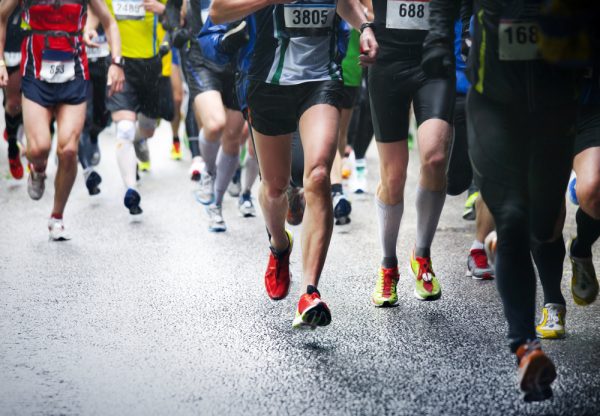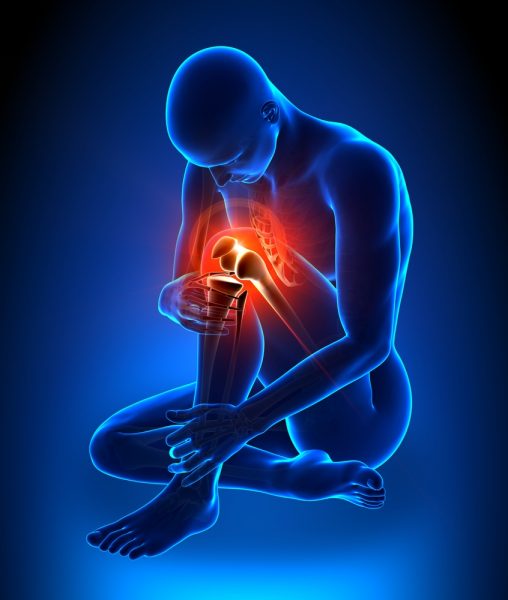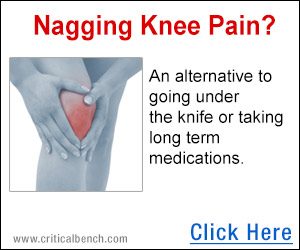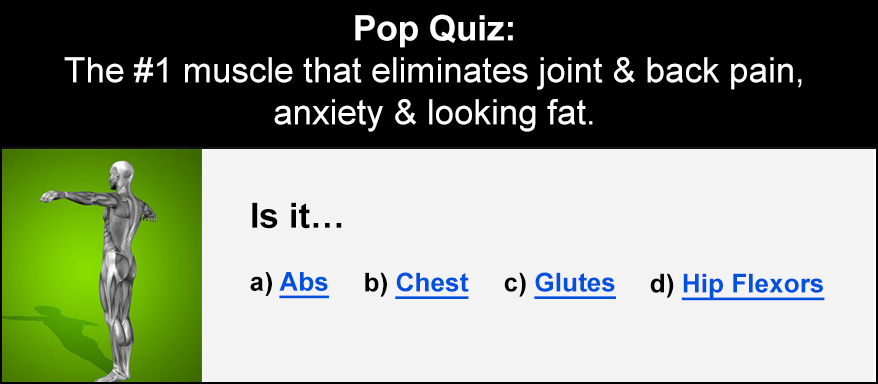
Knee injuries are some of the most debilitating and inconvenient. Playing sports, staying active, and playing with the family are all far more difficult if you’re dealing with problems in the lower body. Something as simple as walking can become very difficult if your knees are painful or inhibited. Reducing the risk of knee injury is important – something you’ll know if you’ve dealt with this kind of injury before. Today we’re going to take you through the risks, precautions, and specific ways to train to prevent knee injuries.
Risks & Precautions
There are a number of key factors in knee injury. Understanding what they are and how they can be minimized is step one to keeping yourself safe and mobile. The risks for knee injuries range from visual to bone health and everything in between. The ability to prevent knee injuries is far easier, better, and safer than dealing with them after they’ve developed.
Prevention is the best cure, so here are the key focuses…
Visual Importance – Antioxidants & Macular
The injury of the knees can be the result of something as simple as the degradation no your eyesight. This is one of the key ways of understanding your place in the world and balance is based on your visual frame of reference.
Falls are a key cause for numerous injuries in the knee, since you’re likely to take the brunt of your fall directly on the knees. This doesn’t always involve a dramatic slip and fall – it could simply be losing your footing and landing your feet/knees/hips in a jarring position.
There are a range of injuries and they all carry their own risk factors but being poorly balanced makes them all more likely to present problems to your health and wellbeing.
Preventing eyesight problems is not easy, but you can do a few things to support it. Here are our top tips for keeping eyesight and balance healthy:
· If you have prescription glasses, wear them!
· Increase your intake of red-orange foods, which are rich beta-carotene, supporting eye health
· Keep your dietary fat intake healthy, focusing on unsaturated fats.
· Supplement cod liver oil to provide Omega-3 fats and vitamins A/D – all of which support eye health
· Get your eyes checked regularly and seek out medical opinions/guidance to support long-term vision health.
Muscle Mass (general benefits) – Dietary & Lifestyle Factors
Building – and then maintaining – muscle mass can be a significant way of resisting knee injury. It provides a way of supporting muscles in the literal sense, providing control and shock-absorption.
This is important in the long-term, too, when muscle breakdown is likely due to aging (sarcopenia). Preventing this improves every aspect of joint health and injury-prevention! Strong muscles support strong joints, providing essential cushioning against impact and adjusting joint position to keep them in normal, healthy anatomical balance.
This is best served with effective, balanced, well-performed technical strength exercise. There’s a significant cost to over-loading your muscles and joints, but sustainable and progressive strength training provides fantastic muscle and strength gains.
These should be kept at a consistent and slow upward trend to improve muscle gains while reducing the risk of injury. You don’t need to push yourself to 100% to see significant positive change – stay behind your potential maximums and work on good technique.
Diet is important here, too – get plenty of protein and consider creatine supplementation. These aren’t just for bodybuilders or elite athletes – they’re key nutrients for all humans ands deficiency in either accelerates muscle-wasting. Keep protein intake high, get your vitamins and minerals in, and consider regular creatine supplementation.
Tendons & Ligaments – Dietary & Lifestyle Factors
The tendons and ligaments that connect bones and muscles are a significant part of the joint’s function. They’re also easily damaged during regular exercise, as well as aging, meaning you can’t really ignore their health in preventing joint injury.
Stiffness of the tendons is associated with better long-term mobility. Not just the stretchy kind – the kind of independent mobility represented by walking around without a frame or avoiding pain when performing everyday exercise like playing with the kids or enjoying physical activity.
Tendons and ligaments can easily lose density and stiffness over time, becoming lax or damaged. These are slow to repair and if you’re not taking care of your connective tissues, they add up quickly.
Diet and exercise are crucial here again.
Exercise strengthens connective tissues and improves active stiffness in the same way it improves muscular strength and pliability. This is a great way of keeping yourself healthy through an active lifestyle.
On the other hand, effective diet – consisting of protein and vitamins/minerals, especially vitamin C – promote healthy connective tissues. Vitamin C regulates the production of collagen – the key protein involved in building up tendons and ligaments.

Bones – Dietary & Lifestyle Factors
Injury to joints often occurs at the bones, where damage is lasting and hard to repair. These tough tissues are built to withstand injury but also experience significant problems due to diet, exercise, and aging.
The onset of osteoporosis is a seriously dangerous example. This is the loss of minerals from bones, which is associated with an increased risk of fractures and far worse symptoms when they happen. For many older adults, these simple fractures begin a cycle of weakness and breaks that carries on for the rest of their lives. This is a serious risk and it begins to deteriorate from the moment we reach full maturity in the 30s.
Bones are strengthened through regular exercise, like muscles and connective tissues, but even slower. Maintaining an active lifestyle supports maintenance of these key minerals, but only if your diet is in order and provides the necessary raw materials. The key nutrients to support bone health are the very compounds that make up the bones themselves, or support their use.
Calcium is the most famous and important, making up a significant amount of the bone mass. This is also supported by vitamin D intake, which improves the uptake of calcium and its effective use in restoring/strengthening the bones. You should also try and get secondary compounds like potassium, sodium, and phosphorus. These can be gained from vegetables and other plant foods, as well as cultured dairy and even direct supplementation.
Osteoarthritis
Osteoarthritis is one of the most common problems associated with joint damage and it ties in everything we’ve discussed so far: muscles, tendons and ligaments, and results in bone damage.
The problem is that OA develops in response to smaller injuries in and around the knee, often so minor you don’t think about them too much. Small tears in the cushioning of the knee leads to bones and connective tissues grinding, producing serious pain and long-term debilitating injury.
Reducing the risk of this common, progressive, destructive disease are varied:
· Reducing bodyweight and combatting obesity
· Improving collagen and vitamin C intake to support the “cushioning” in the knee
· Stretching and reducing tightness around the knee joint and its associated muscles
· Light-medium exercise to improve blood flow and strengthen connective tissues around the joint
· Unloaded movement and aquatics to reduce impact during exercise
These add up over time. The best approach is to catch your risks early and improve your overall care and consideration for your own knees![LGR1]
Training to Reduce Knee Pain/Injury Risk Specific training to reduce the risks of these injuries can be the best choice for those of us who are still healthy. The prevention of these issues is a lot easier than reversing or managing them.
Specific training to reduce the risks of these injuries can be the best choice for those of us who are still healthy. The prevention of these issues is a lot easier than reversing or managing them.
We are going to take you through a simple series of training approaches and exercises you can employ to support your knee health and reduce injury risk. Some of these are obvious, while others are far from what you’re expecting…
Core
When we look at most problems in the body, it makes sense to start close to the centre of the body (spine) and move outwards. This tends to be the direction that problems start in, and it’s one of the most holistic pathways for solving problems.
The muscles and resting positions of the core affect everything you do when you move. Weakness in core muscles can offload weight to the hips and knees in unhealthy, asymmetrical ways – this often shows up as a knee injury.
Studies show that there are huge increases in knee-joint injuries among athletes with poor core function. Training the rotation, lateral movement, and stability of the core while moving the legs is key to better join durability. Here are some key exercises for reducing core-hip-knee problems:
· Deadbug
· Bird-Dog
· Garhammer raise
· Lying Leg Raise
· 8-point plank[LGR2]
These combine core stability and strength, as well as integrating core movement with other key movement patterns. Keep the core tight and unmoving throughout!
Hip
The hips are directly above the knee and the hips/ankles make up a significant portion of the risk factors surrounding your knees.
The main effect of the hips on the knees is proper alignment and distribution of weight. External and internal rotation of the hips – especially when loaded- is a key factor in the health of the knees. Loading in poorly-aligned positions shifts the stress from the muscles to connective tissues and bones.
To avoid this, we work through a series of movements to strengthen the hip muscles, improve mobility, and provide better movement control. These are simple to perform and provide strengthening as well as improved hip positioning:
· Hip swivels
· Hip raise and external rotation
· Hip hinge pattern (weightless)
· Hip thrust
· Paused Romanian Deadlift

Knee
Strengthening the muscles around the knee itself is well-supported. This is also effective for strengthening the tendons and bone density of the knee and providing stability in crucial movement patterns.
Learning to move the knee under control with good alignment (from the hip training mentioned above) is a great way of improving your overall strength, balance, and reducing injury risk.
Training the knee itself involves a series of fantastic movements that balance the demands of the knee and hip together.
· Leg Extension Holds (unweighted and weighted)
· Reverse lunge
· Deficit Reverse Lunge
· Split Squat (with band, if you ned better hip control)
· Squat with co-contraction
· Bulgarian Split Squat
· Deficit Bulgarian Split Squat
During these exercises, remember to keep the core and hips active, while keeping the knee and foot parallel and aligned. Moving these out of alignment increases the risk of connective tissue injury and meniscus tears. This also ensures you’re training the correct muscles.
Ankle
The ankle and calf are the opposite of the hip. They attach on the opposite side of the knee and provide stability in the opposite direction. They connect the knee to the floor, the source of all impact and a mediating factor for all types of movement.
Control of the knees is also affected by the muscles of the calf, which can exert significant demand on the knee and pull it out of position. A combination of good mobility and strength/control can reduce knee injury risk and balance out the demands of the quad/hamstring on the patella.
You don’t need huge amounts of training to ensure the health and wellbeing of the calves. It’s as simple as developing better mobility and then using them to produce strength and balance.
· Gastrocnemius/soleus stretches
· Deficit calf raises with a pause at the top
· Knee/Calf co-contraction
These provide effective training and stability to the knee from the “other side” and ensure balance where the body meets the floor.
Final Thoughts
Knee injury is a problem for everyone from the average joe to the Olympic athlete to the elderly. There are no ways of avoiding dealing with your knees – you just choose the risk at which they are placed and your own risk profile.
Investing in the long-term health of your knees is key no matter what your goal. Athletic performance, general health, and healthy aging all overlap with the consistent, pain-free movement of the knees.
The changes you can make with this simple advice may result in decades of better performance, safe training, and independent movement when it matters most to you.
Take care of your knees and they’ll take care of you and your fitness goals!
[LGR1]
§ https://www.sciencedirect.com/science/article/pii/S0002934398004136
§ Evidence suggests common asymptomatic OA is a real concern: https://www.nejm.org/doi/full/10.1056/NEJMoa0800777
§ Meniscal damage (as above) is a significant risk and should be addressed – either conservatively or surgically: https://onlinelibrary.wiley.com/doi/full/10.1002/art.24383
§ Reducing risk: weight management, food and collagen support, Light-Medium exercise, stretching and movement (esp. aquatics),
[LGR2]
§ http://www.academia.edu/download/38580518/Leetun_2004.pdf







